Celebrating Christmas responsibly: Negros communities create biodegradable ‘parol’
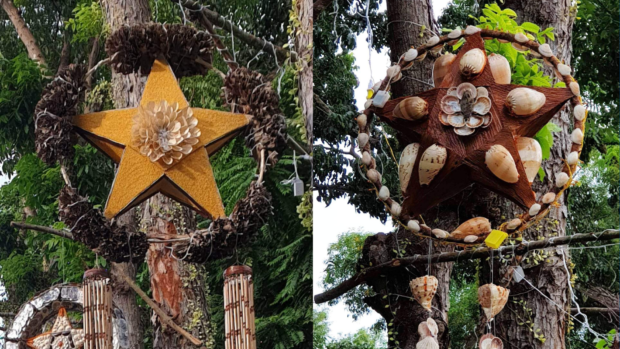
LEFT: One of the Christmas lanterns made out of biodegradable materials on display at the Center for Community Transformation and Retreat in Manapla town, Negros Occidental province. | RIGHT: A Christmas lantern made of seafood shells and other indigenous, biodegradable materials. CONTRIBUTED PHOTOS
MANILA, Philippines—Christmas lanterns, or parol, made of coconut husks, shells, leaves, abaca, egg trays, corn husks and even crab shells.
The parol made by communities in Negros Occidental are not common but could rival, even outshine, the more commercial ones illuminated with electric lights.
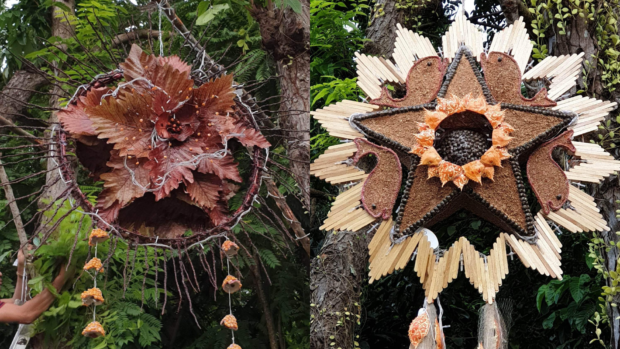
LEFT: The parol made by residents of La Castella town. They used bamboo, coconut tree branches, egg frays, dried ferns, corn and hyptis plant. | RIGHT: Cadiz City residents made this Christmas lantern using bamboo, crab shell, popsicle, fish net, used cardboard, abaca and used newspaper.
Made by residents from 17 cities and towns in Negros Occidental, the biodegradable Christmas lanterns are currently displayed at the Center for Community Transformation Retreat and Training Center in Manapla town as part of their parol-making contest.
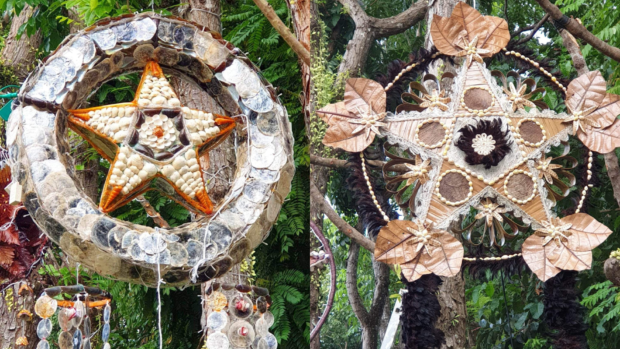
LEFT: This parol created by Bago townspeople was formed using bamboo and different kinds of shells. | RIGHT: Bacolod (east) residents used anahaw leaves, ipil-ipil tree seeds, dried coconut seeds, abaca, shells and dried banana trunk for this oeuvre.
Priceless
Aside from being biodegradable, one of the criteria of the contest is for the items to cost not more than P500.
But for Arlene Sy, the partnership head of the Center for Community Transformation, the Christmas lanterns are priceless, since they have an invaluable component—the camaraderie and bayanihan spirit of community members.
Article continues after this advertisement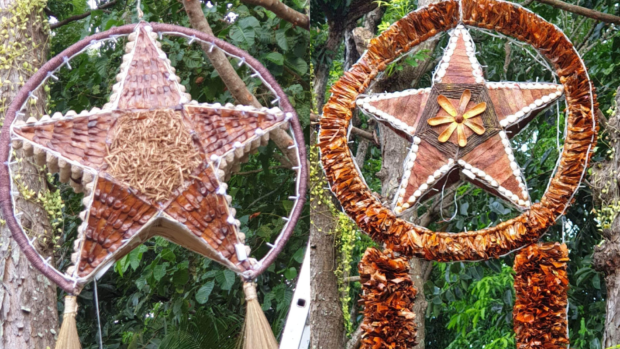
LEFT: The parol of Kabankakalan town residents was created using coconut, dried banana leaves, abaca, bamboo, mahogany seed, egg trays and walis tambo. | RIGHT: Silay City inhabitants crafted this parol using tree materials like coconut crownshaft, bamboo, dried banana leaves, mahogany seeds, coconut inflorescence as well as shells.
“Most of the products could only be found in their environment,” Sy told INQUIRER.net in an online interview. “We want it to become eco-friendly, so it can show that from nothing we can create something from the camaraderie, team work, and bayanihan spirit of the Filipino.”
Article continues after this advertisementIt being a contest, the creators of the best parol will get a cash prize, but Sy said the participants are not motivated by that primarily.
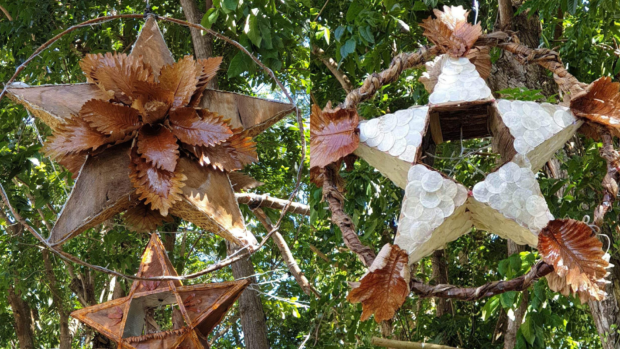
LEFT: The residents of Sipalay City made this parol using coconut sheat, basket fern, and sawdust which led to this all-brown parol. | RIGHT: Hinigaran town residents created this piece using capiz shell, dried banana trunk, ipil-ipil tree leaves and basket fern.
“What’s good about this is that they are not motivated to win, but we launched the contest to honor their work and their workmanship,” she said.
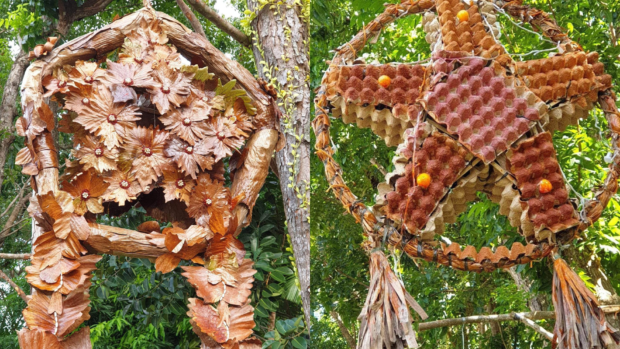
LEFT: San Carlos City inhabitants used bamboo basket ferns, soybeans, dried banana leaves, and atsuete seeds for this parol. | RIGHT: Bamboo and egg trays are the main components of this parol made by inhabitants of Cauayan City.
Parol for a cause
The Christmas lanterns could be sold afterwards to fund outreach projects, according to Rubilyn Deles, the head staff of the retreat center.
“To maximize their effort, we plan to sell it for a cause,” Deles said.
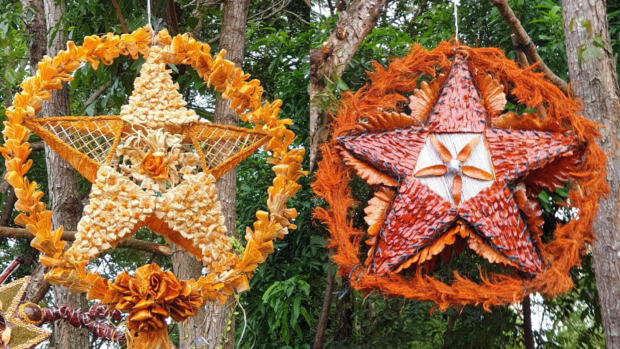
LEFT: Bacolod (south) residents used bamboo and coconut husks for their yellow parol.
| RIGHT: This seemingly autumn-themed Parol was made by Bacolod (south) residents using coconut husk, mahogany fruit, mahogany shell, coconut cloth-like sheath, basket ferns, dried leaves, miscanthus and sugarcane flower.
According to her, the proceeds of the parol sale will go to outreach projects involving some 500 children.
The winner of the parol making contest will be announced on December 16.

LEFT: Bacolod (north) residents used all-coconut materials for their entry. The materials they used — dried coconut leaves, coconut stem, palm stem and coconut husk — came from the “Tree of Life.” | RIGHT: Victorias City residents used dried banana leaves, mongo beans, corn, nipa fruit, crab shell, coconut shell, mahogany fruit shell, coconut crownshaft and bamboo to create this intricate piece.